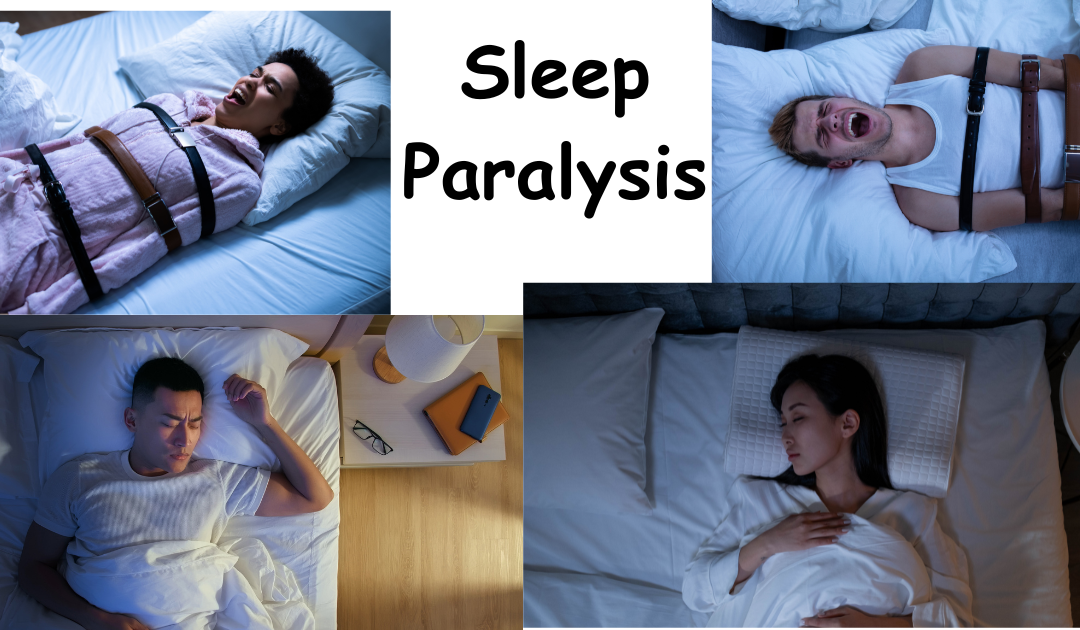Have you ever woken up feeling frozen, unable to move a muscle? Perhaps you saw shadowy figures in the room, felt a crushing weight on your chest, or heard disembodied whispers. If so, you might have experienced it, a terrifying but ultimately harmless phenomenon. This article dives deep into the world of aimless sleep paralysis, separating fact from fiction and offering guidance for anyone who’s encountered this unsettling state.
What is Sleep Paralysis?
A temporary inability to move or speak occurs as you fall asleep or wake up. It happens when your brain disrupts the normal sleep cycle, causing the body’s paralysis associated with REM sleep to linger into wakefulness. While you’re aware of your surroundings, your body is essentially stuck in a dream state. This can be incredibly frightening, especially if accompanied by hallucinations.
Key Points:
- Affects roughly 8% of the population at some point in their lives.
- More common in young adults and people with underlying sleep disorders.
- Lasts for seconds or minutes, but feels much longer.
- Not dangerous, but can be emotionally distressing.
Aimless vs. Nightmares: What’s the Difference?

Many people confuse sleep paralysis with nightmares. Here’s a breakdown to help you tell them apart:
Sleep Paralysis vs. Nightmares
| Feature | Sleep Paralysis | Nightmares |
|---|---|---|
| Awareness | Aware of surroundings | Not aware of surroundings |
| Movement | Unable to move | Can move freely within the dream |
| Sensory Input | May experience hallucinations (sight, sound, touch) | Dream sensations may feel very real |
| Fear | Often intense and frightening | Can be scary, but not always |
| Duration | Seconds to minutes | Can vary widely |
In Short:
- It happens when you’re awake but paralyzed, while nightmares occur during sleep.
- During sleep paralysis, you’re aware of your surroundings, unlike nightmares.
Common Experiences During Aimless Sleep Paralysis
| Experience | Description |
|---|---|
| Paralysis | Inability to move any part of your body |
| Chest Pressure | Feeling of a heavy weight on your chest |
| Difficulty Breathing | Shallow or labored breathing |
| Fear and Panic | Intense anxiety and fear of dying |
| Hallucinations (Aimless) | May see indistinct shapes, shadows, or flashes of light |
| Sounds | Muffled sounds, buzzing, or ringing in the ears |
| Remember! |
- It doesn’t involve specific monsters or demons.
- The lack of clear visuals can be just as frightening as classic sleep paralysis hallucinations.
Aimless Sleep Paralysis: Beyond the Monsters
Traditional descriptions of it often involve terrifying creatures or demons. However, the term “aimless” refers to the lack of specific visual hallucinations. People experiencing aimless sleep paralysis might simply feel a sense of pressure, see indistinct shapes, or hear muffled sounds. The fear and terror stem from the paralysis itself, not necessarily from specific visions.
Breaking Free: How to Cope During Sleep Paralysis
While it can be terrifying, it’s important to remember that it’s temporary and harmless. Here are some tips to help you cope during an episode:
- Stay Calm: Panic can worsen the experience. Breathe slowly and focus on relaxing your muscles.
- Try to Move: Even wiggling your fingers or toes can help break the paralysis.
- Shift Your Gaze: If you can’t move your body, try moving your eyes from side to side.
- Focus on a Sound: Concentrate on an external sound, like a clock ticking, to anchor yourself in reality.
- Wait it Out: It usually only lasts for a few seconds or minutes.
Additional Tips:
- Practice relaxation techniques like deep breathing meditation before sleep.
- Maintain a regular sleep schedule to avoid sleep disruptions.
- If it is frequent or severe, consult a doctor to rule out underlying sleep disorders.
Seek Help: Moving Forward

Sheila Pryce Brooks is an expert in sleep paralysis and extraordinary spiritual experiences. She is passionate about illuminating the overlap between it, spirituality and science through research and education and she has since dedicated her life to helping others manage and transcend it and other extraordinary spiritual experiences.
you can Email at:[email protected]
And Arrange your time!
FAQs
What is sleep paralysis caused by?
The exact cause of it remains under investigation, but scientists believe it’s strongly linked to disruptions in Rapid Eye Movement (REM) sleep.
How do you get out of sleep paralysis?
To get out of it, focus on moving a small body part, like your fingers or toes, to signal your body to wake up. Take slow, deep breaths to help relax your muscles, and remind yourself that the experience is temporary.
What happens if you wake someone up during sleep paralysis?
Waking someone up during it can help them end the experience. They may feel disoriented or scared initially but will gradually return to full consciousness. Reassure them and encourage them to relax.
Can anxiety cause sleep paralysis?
Yes, anxiety can contribute to it. Stress and anxiety can disrupt it patterns, leading to an increased likelihood of experiencing it.
Conclusion: Aimless Sleep Paralysis
Aimless sleep paralysis, with its sudden onset of paralysis and unsettling sensations, can leave you feeling disoriented and afraid. However, by delving into the science behind it, we can shed light on this mysterious phenomenon and transform fear into understanding. This journey has equipped you with the knowledge to differentiate aimless it from nightmares, provided coping mechanisms to navigate an episode, and emphasized the importance of seeking professional help if necessary.
Remember, it is a temporary sleep cycle glitch, not a doom harbinger. By adopting healthy sleep habits, practicing relaxation techniques, and maintaining a calm perspective, you can empower yourself to manage these occurrences. The next time you encounter aimless sleep paralysis, you’ll be armed with the knowledge and tools to navigate it with greater ease. So, breathe deeply, focus on regaining control, and remember, a peaceful night’s sleep awaits just beyond this temporary hurdle.
